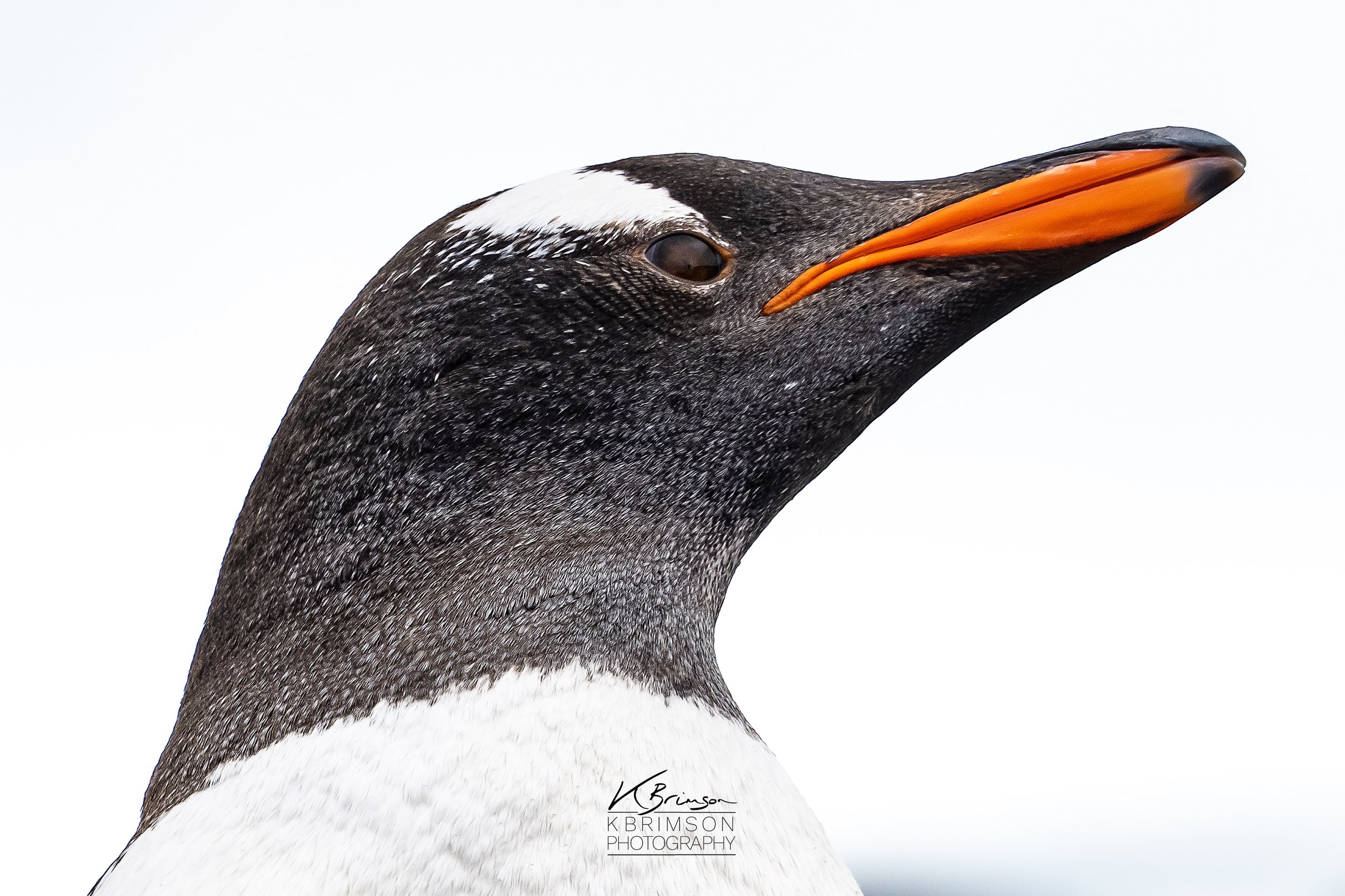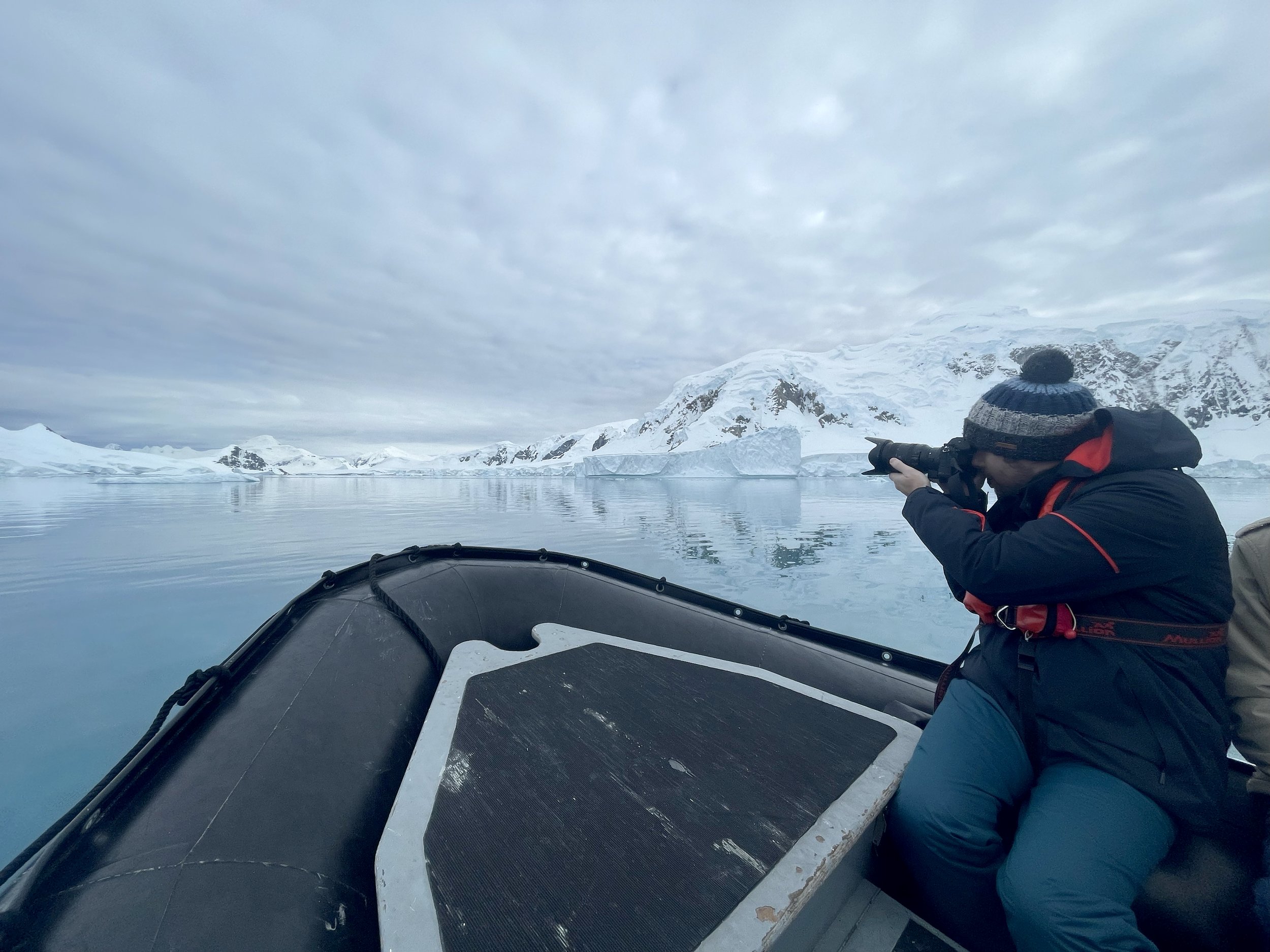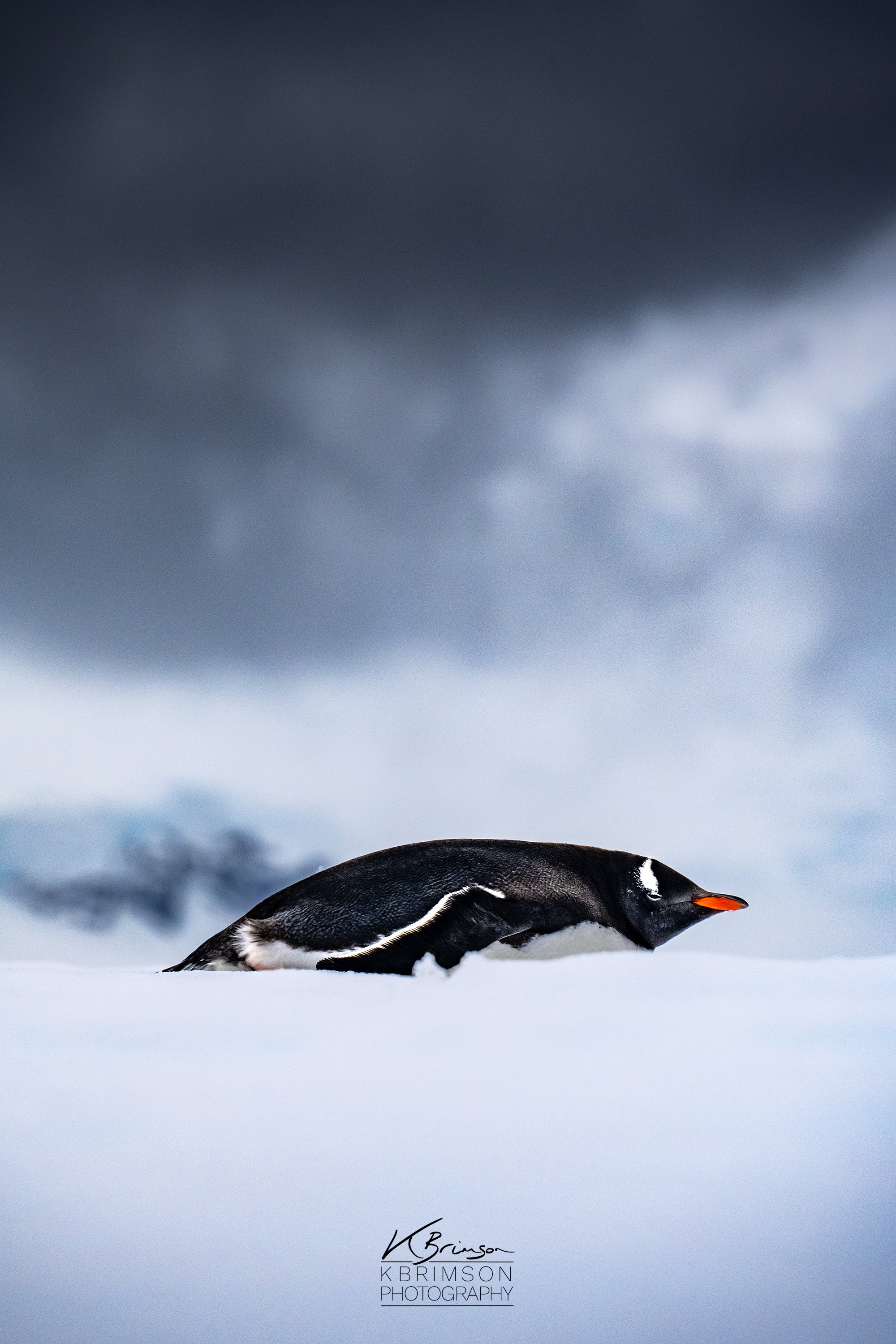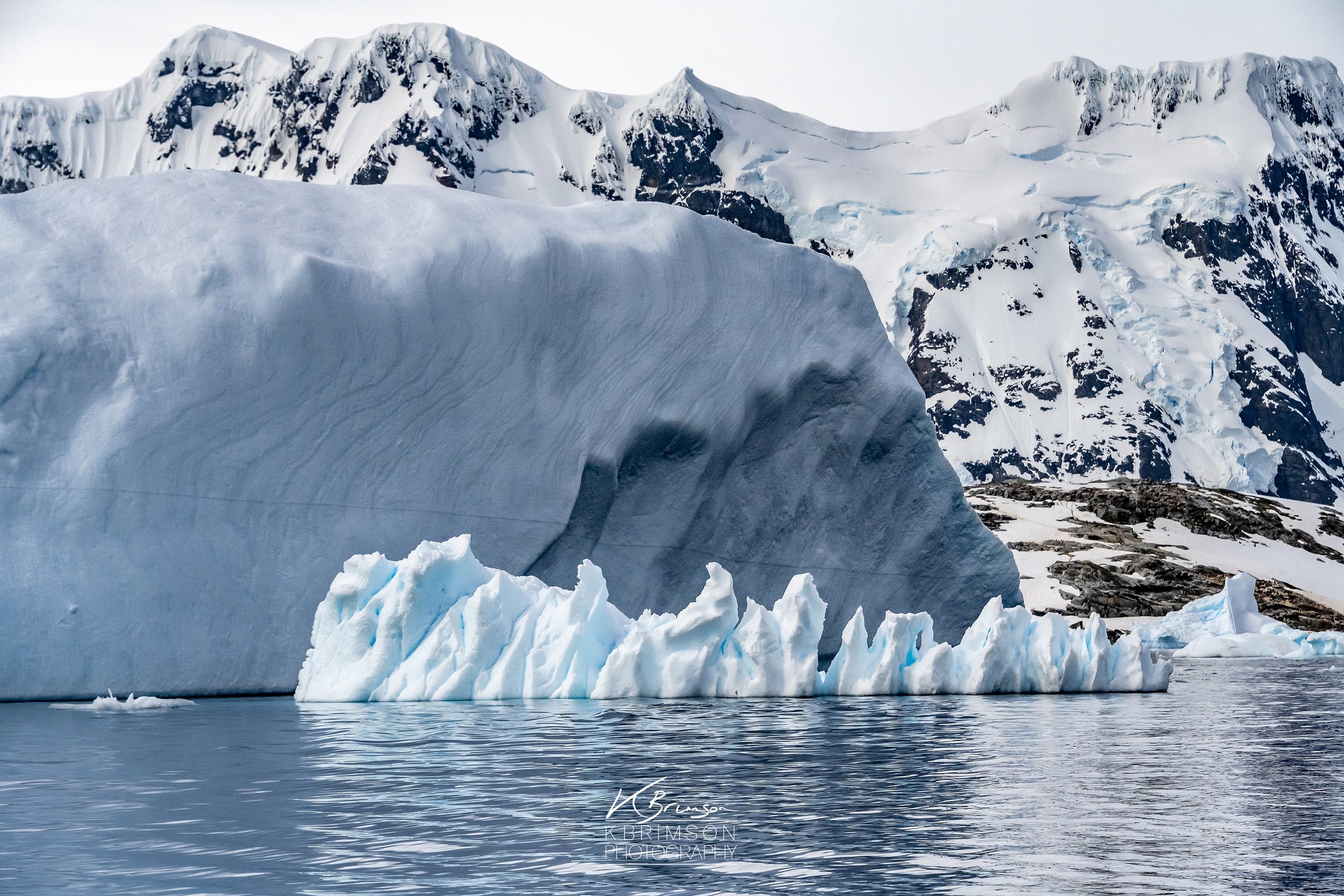Travelling with a Single Lens: Antarctica in Focus
Armed with a single 28-300mm lens, Kieran Brimson navigates the ice-packed desert of Antarctica ready to capture its frozen landscapes and stunning wildlife.
During his home life in Cornwall, photographer Kieran Brimson is often equipped with a heavy haul of camera gear. By day, his career as a commercial photographer necessitates a wide range of equipment, while out of office, his hours spent capturing the Cornish landscapes involve carefully selected gear fit to handle the Cornish elements. Covering every base, a telephoto lens, a wide-angle lens and a macro lens are his steadfast companions, with each specifically chosen for their ability to make or break a shot.
Making the decision to head to Antarctica armed with a single lens was subsequently a very bold move. Removing the safety net of multiple lenses and challenging a different point of view, Kieran decided to push his photographic journey to the next level and see what he could capture with a singular lens: the Nikon AF-S Nikkor 28-300mm f/3.5-5.6G IF-ED VR. But what was it about this trip that compelled Kieran to try this new frame of sight, and of mind? And what was it about the frozen landscapes of Antarctica that had so captured his imagination – a Cornishman more used to sandy swathes than frozen planes?
“I chose Antarctica as it was so out of the ordinary” explains Kieran. “I didn’t know anyone who had visited there. One of my favourite places I had been to previously was the Amazon rainforest; it was the only place I had ever been to where humans were the guests, and I really wanted another taste of that. When the rare opportunity arose to go to Antarctica, I seized it with both hands. Then, once plans started forming, I found myself mulling over which lens I should travel with. That’s when I set myself the challenge of travelling with just one”.
Taking into account the practicalities of journeying to the southernmost continent in the world and setting his sights on new photographic horizons, Kieran embarked on a flight to the South American country of Argentina with his camera, a back-up camera (just in case) and one lens. From here, an unseasonably calm and gentle two-day boat trip from Ushuaia on the Tierra del Fuego archipelago led Kieran and his fellow voyagers across the Drake Passage and towards Antarctica: one of the last true wildernesses on the planet.
Despite the potential challenges ahead, Kieran was confident he had everything he needed to capture the landscapes unveiled before him. “I wanted to avoid having to change lenses to get a variety of shots. I was conscious of the weight involved in carrying around lots of lenses, and I was also aware of the logistics of trying to use larger lenses in confined spaces like ribs. We captured a lot of our wildlife shots from inflatable Zodiac boats; we were squeezed in shoulder-to-shoulder, so swinging a larger sized lens around to quickly capture wildlife would not have been easy – nor would it have made me particularly popular with other passengers!”
“Before I left, I spent a lot of time weighing up the different options. Research had led me to believe that a 600mm lens may be overkill as you can get pretty close to penguins and seals anyway. And with the full frame sensor of my Z7 camera, I could crop with the 300mm post-capture without losing quality – and indeed I did this with quite a lot of my images. The 28-300mm really appealed to me as it enabled me to capture wide shots if I wanted to get them, as well as allowing me to zoom in on wildlife without being too close or disturbing them. It is the perfect travel lens, I would say”.
A world away from his home in Hayle in Cornwall, the frozen planet of Antarctica offers an endless supply of inspiration at every turn – helped along by the wonderfully still, pleasant weather Kieran was lucky enough to enjoy throughout his trip. “I didn't really have any expectations when I set off to Antarctica about what I wanted to capture, other than keeping an open mind. That said, when we got there, the scale and ruggedness of the landscapes were so much more than I had expected, so much grander than I could have imagined. It was very moving”.
“Initially, there was this temptation to photograph absolutely everything, including any signs of that first penguin, no matter how far away it was. There are definitely some unmistakeable, penguin-sized dots in my first run of photographs from the trip. That said, once I’d managed to get that initial rush of excitement out of my system, the rest of my photographs were much more focused and considered. Especially, with the landscapes of Antarctica, they’re so massive and so awe-inspiring that it’s tempting to use a wide-angle and try to capture all of it; however, it was much more effective to zoom in and focus on one particular aspect, following the light and features for drama and scale.”
Seasoned in the elements and somewhat mercurial weather conditions thanks to his life on the coast in Cornwall, Kieran is certainly no stranger to adapting to what’s around him. But ocean and marine mammals aside, very few other similarities can be drawn between his time in Antarctica and his home county – a salt-kissed peninsula that sees around 7 days of sleety snow a year on average. Fortunately, both Kieran and lens were well up to the challenge, and even though the aperture was limited to f5.6, Kieran explains that, as everything was so bright due to the reflective snow, this was no problem. Coupled with a UV filter and array of ND filters, all was well-catered for.
“I did actually take a tripod with ND filters as well. I was hoping to replicate some of my Cornish beach photography with white feathered water rushing up to my feet, but replacing the golden sands of Cornwall with Antarctica’s harsher environment of ice and stone. However, my attempts at this were mostly a failure as there was zero wind during my stay, so there would have been no dramatic cloud movement with an ND filter, nor was there any energy in the sea. In fact, the sea was completely still, so there was no possibility of capturing what I wanted. It was certainly a sacrifice I was happy to make, though!”.
“I think for the majority of people visiting Antarctica the cold and the wind is actually a real problem – especially for photographers. I had researched and everywhere I looked there were warnings to take as many batteries as possible as the cold zaps the power from them. But for my visit, the wind was still and the sun was out. So, although it was about 0 degrees on average, with the sun beating down on the camera for a lot of the trip I was never feverishly changing batteries during my landings. It was simply a case of recharging everything once I was safely back on the boat - and looking through the day’s shots, of course”
Luck was clearly on Kieran’s side in terms of the elements, but was his vision for travelling with a singular lens, and most importantly, the 28-300mm, a choice he would happily repeat again in the future? And, would the challenge be something that he would take with him back to his pursuits around Cornwall? “This lens is a great option to have if you are struggling with room in your luggage as it can capture almost everything you would need. Also, when in a group situation, you have to go at their pace instead of your own, so not having to take time to change lenses is important as you might not have the chance”.
“I would definitely consider taking this lens again. In Antarctica, like in Cornwall (although, admittedly, much more rarely), you might find yourself working on photographing a landscape, and then in your ear you hear someone say: "I see a whale!". Being able to suddenly switch from a wide shot to a telephoto means there’s much less risk of missing the moment. It certainly avoided a lot of heartache and prevented those moments where you need to begrudgingly say “no” when asked the question all photographers wince at: "did you get it?"
“To be honest, there are wildlife opportunities in Cornwall, but it had never really interested me. My work largely focuses on food, interiors and landscapes, so wildlife photography is not something I’ve delved into too deeply before. However, I think I actually enjoyed the challenge of capturing Antarctica’s wildlife more than shooting the scenery, which was a bit of a revelation. I think understanding the range of freedoms and opportunities you can enjoy as a photographer with just one lens is also really liberating, and something that’ll continue to play a part in future projects.”
Travelling abroad can pose just as many challenges as opportunities for even the most experienced photographers. The saturation of ideas and the scarcity of subjects, the climate and the conditions, the successes and the mishaps are all part of the picture. But what’s a journey without a challenge? Taking his photographic ventures one step further and travelling with one lens, it’s safe to say Kieran’s perspectives on photography both at home and on the road are as broad, focused and imaginative as his photographs and inspire a whole new look on the world around.



































